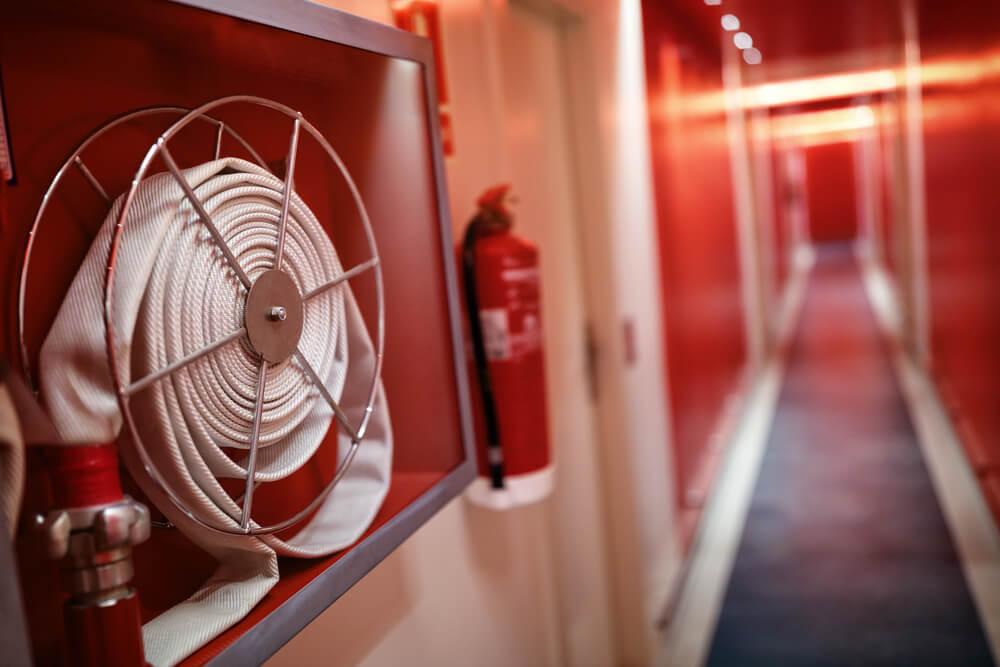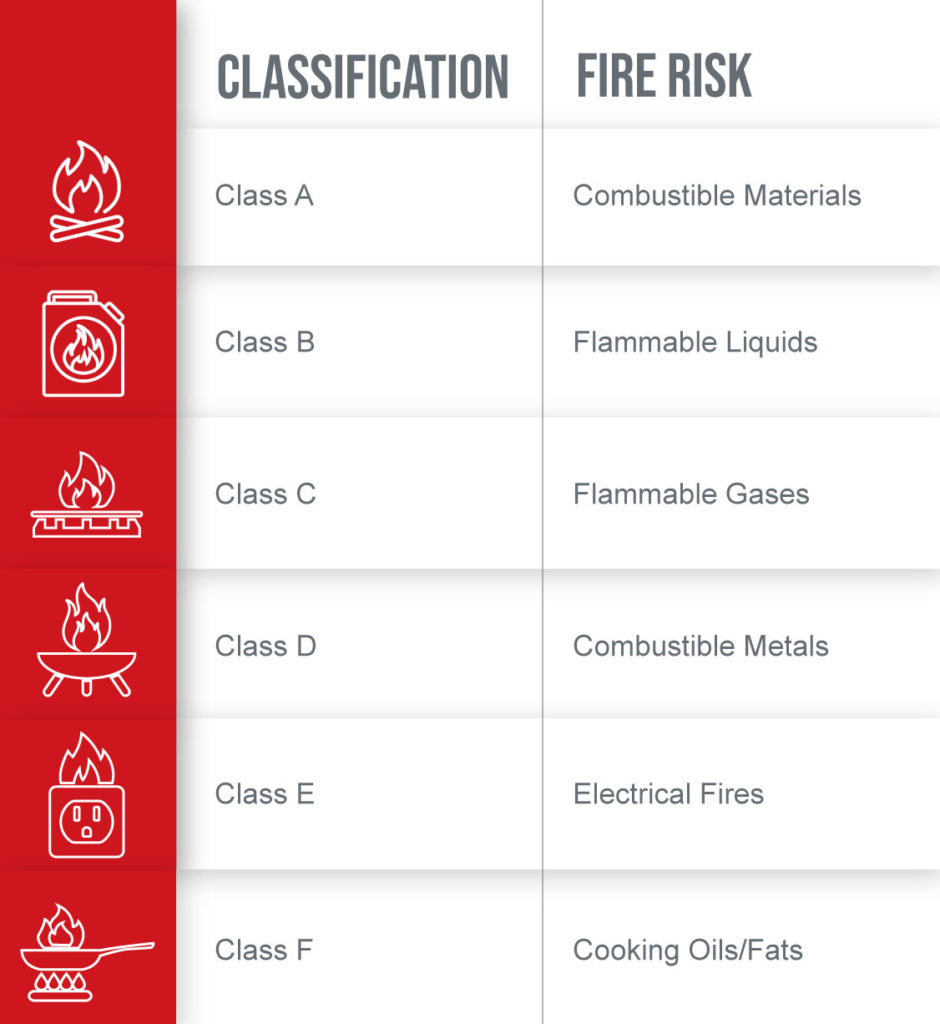
When planning for risk assessments and general preparedness, whether in domestic, or more commonly, commercial buildings and properties of any kind, knowing the fire classifications is incredibly important.
By assessing what type of fire, you are at risk from, the materials you hold in your building as well as the construction of your building, you’ll be able to accurately assess the fire classes you may have to deal with and how you can mitigate them.
What Are The Six UK Fire Classifications?
The six UK fire classifications are:
- Class A – Combustible Materials
- Class B – Flammable Liquids
- Class C – Flammable Gases
- Class D – Combustible Metals
- Electrical Fires (Class E is not commonly used)
- Class F – Cooking Oils/Kitchen Grease

Class A – Combustible Materials
A Class A fire is one that is starts from paper, cardboard or other flammable solids. It’s the most common type of fire people will prepare for, as it’s what makes up the majority of our buildings in the UK. A small paper fire to a house fire will often include a lot of Class A materials, as a Class A any combustible solid.
This class of fire is treated most commonly with water-based fire extinguishers but can be treated with foam, dry powder and wet chemical extinguishers as well.
Class B – Flammable Liquids
Class B fires are those that come from flammable liquids, such as petrol and diesel, methanol, white spirit, etc.
As these liquids are all at high risk of quick and dangerous combustion, there are a lot of regulations surrounding the storage, transport and lifespan of them. Class B fires are very dangerous, as water becomes a conductor of fire in these cases, so ensuring that staff are trained on dealing with them is key.
Class C – Flammable Gases
Much like flammable liquids, these are highly volatile compounds such as propane, butane methane, hydrogen and similar. While not something commercial premises come into contact with regularly, flammable gases need to be considered. Flammable gases can ignite very easily, so storage containers and shelving need to be kept safe.
The only extinguisher that can tackle Class C fires is a dry powder extinguisher, and as such, any commercial property that has flammable gases will need to be adequately prepared.
Class D – Combustible Metals
As combustible metals are few and far between, and only really used in controlled environments, the risk to the general commercial office is lower. However, for those who come into contact with combustible metals such as magnesium, aluminium, titanium and potassium, it’s important to be aware of the risks.
For example, aluminium cans are not often flammable, but small chips or shavings of raw aluminium can be.
To prevent a high risk, regular cleaning should be carried out in areas where combustible metal shavings could be found. And, if metal shavings are regularly used in an area, a Class D fire extinguisher (L2 or M28) must be provided.
Electrical Fires (Class E)
Electrical fires are one of the most common workplace fires, whether down to faulty leads, overloading a system, or by failures in old appliances. As a business owner, it’s important to be aware of the risks that electrical appliances hold and how you need to prevent any risks.
Unlike other classes, electrical fires cover such a broad range that they are given their own category, which covers a multitude of occurrences. Electrical fires will often affect other classes, such as Class D combustible metals, or Class A combustible materials. As it is not the electricity catching fire but the materials around it, electrical fires can be incredibly dangerous.
To treat an electrical fire, you will need to first turn off the electricity access, before using a CO2 or dry powder extinguisher. To restore a fire caused by electrical faults, it’s important to use a professional fire restoration service, who can work safely and compliantly through the process.
Class F – Cooking Oils/Fats
Due to the high risk of oil fires, especially in commercial kitchens, it is designated as its own class. As fires from oil, especially when working on gas stoves, can easily happen, being prepared for this is essential.
The building proprietor of an HMO (House in Multiple Occupation) should provide fire blankets to tenants, but other building owners may choose to do this for rented properties.
And for those working in commercial kitchens, fire blankets and a wet chemical extinguisher are needed to ensure the safety of chefs and kitchen staff.
Looking for an expert in fire restoration services?
If you’re working through a risk assessment and want to speak to us in advance about our fire restoration services, then get in touch with Restorations [UK] today.

